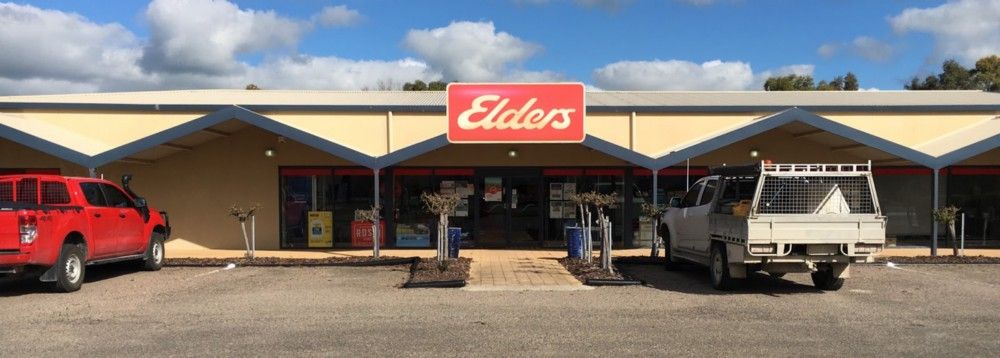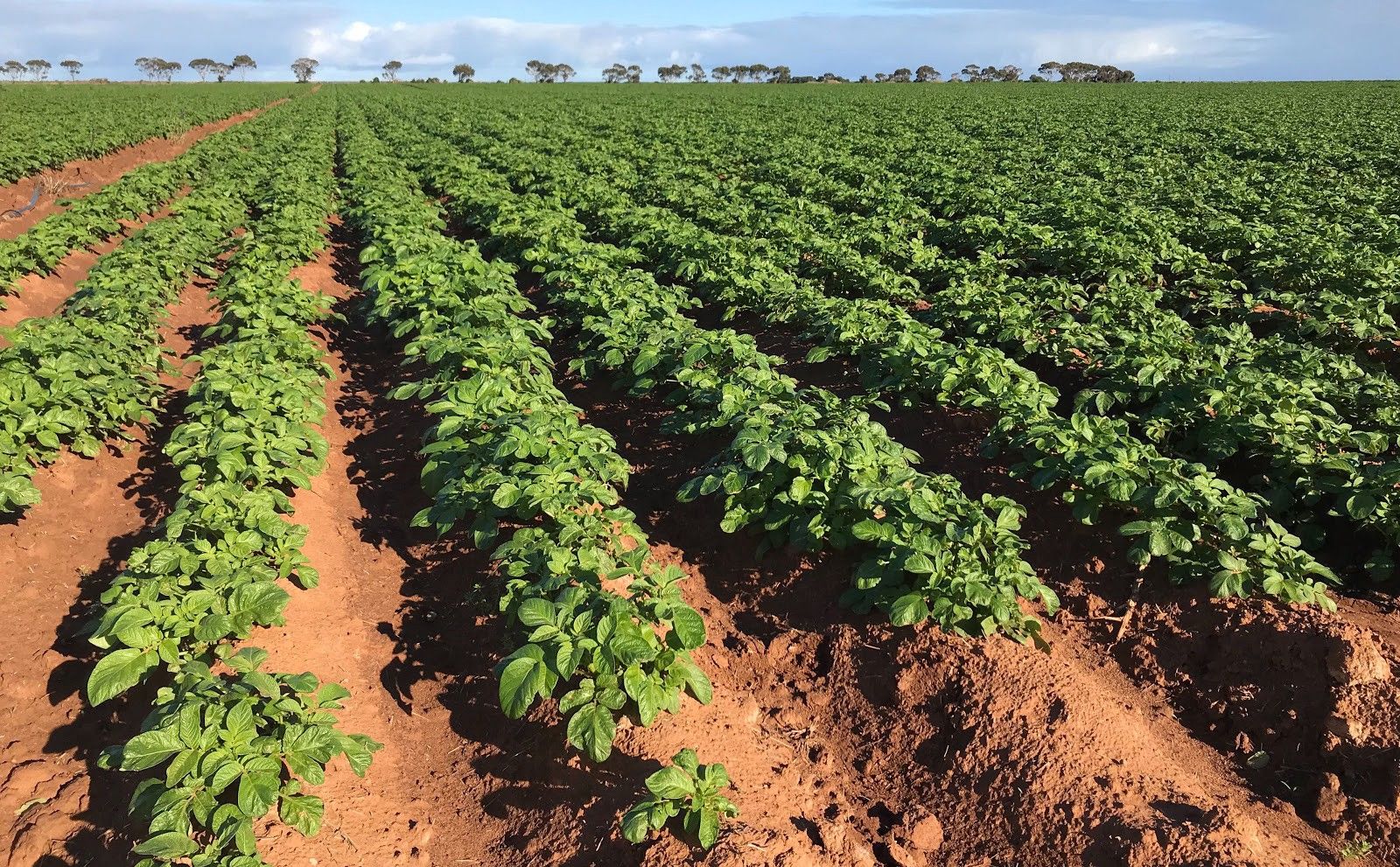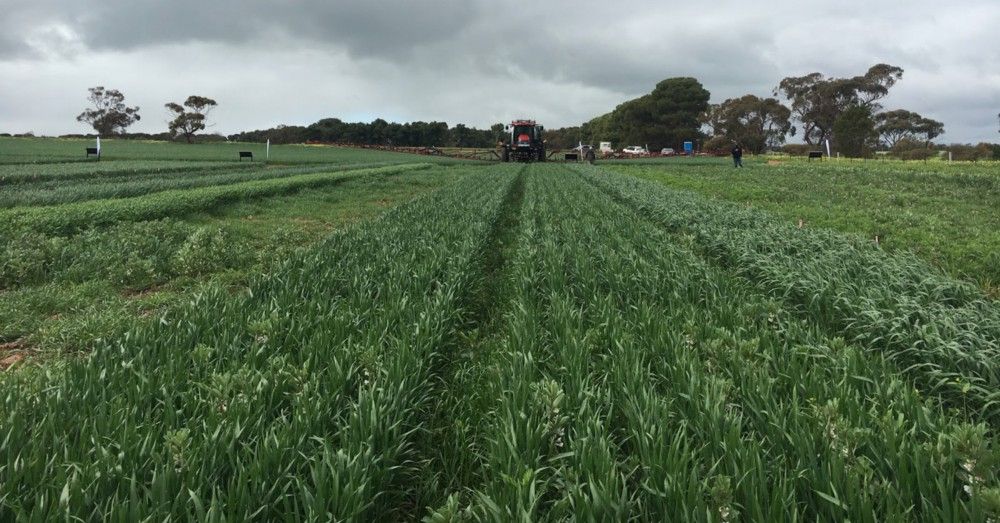Planning for Change
An Interview with Graham Page, Head of Technical Services, Elders Australia
Potatoes growing near Adelaide (photo by Jess Bollinger)
The last several decades have seen Australian agriculture increasingly plagued by scarcity of water. This trend, which culminated in the Millennium drought of the early 2000s, led to the creation of arguably the most sophisticated (and controversial) water market in the world, the Murray-Darling Basin (MDB) water market system. This arrangement allows farmers to trade their water rights on the open market to domestic or foreign investors.
Climatic model simulations project that high-value growing regions in Southern Australia and near the MDB demonstrate a potential decline in water supply by nearly 20% over the next 70 years, and up to 32% decline at extreme times during the year. The MDB system has jump-started a debate about the value of water, real costs of producing food, and the meaning of land use in a sustainable production system. This creates a debate within Australia that seemingly pits urban and industrial water use against agricultural water use. Growers across the continent are grappling with maintaining their communities and livelihoods and producing commodities in a lopsided food economy.
One core question that continually occupies our minds here at Arable seems especially appropriate here: how can better data help growers make informed decisions about how to manage their water resources?
Enter Graham Page, better known to the Aussie ag cognoscenti as Pagey. He has worked in the Australian ag industry for 26 years, the bulk of which he spent rising through the ranks at 181-year-old ag stalwart Elders. First hired as an agronomist 19 years ago, he was promoted to state-based agronomy manager, then national agronomy manager, and is now head of the Technical Services division and Thomas Elder Consulting (TEC). “In all that time, I have witnessed many changes and challenges across Australian agriculture,” he says. “The only thing that is certain is change.” It is here at the nexus of unique problems and innovative solutions where our paths intersect.

An outpost of the 181-year old ag stalwart Elders (photo by Levon Minassian)
As part of an ongoing series of discussions with Australian agricultural leaders, Arable’s Levon Minassian caught up with Pagey to talk about what’s happening down under, and how to address the challenges Aussie growers face every day.
Levon Minassian: In our travels through Australia, we saw that growers are increasingly placing water conservation at the top of their priority list. What would you say is causing this trend?
Graham Page: Some of the biggest challenges Australian farmers face today include climate variability, environmental capacity, sustainability, and the social impact from our communities across Australia, both metropolitan and regional.
In the last 10 years we have seen many areas of Australia impacted by water restrictions due to constant dry periods in all parts of Australia, but predominantly in Queensland and NSW.
This dry period has affected the large number of farmers who rely on irrigation to grow their crops, including almonds, citrus, vines, potatoes, rice, cotton, wheat, canola and many more.
LM: How do both the shifting climatic scenarios and market incentives impact technology adoption?
GP: This has been a massive driver for adoption of various technologies to help measure and manage water use efficiency on-farm. Our farmers are having to grow more with less. They are tracking every drop of water used. Many farmers have adopted on-farm soil moisture monitoring, channel flow meters and localised weather monitoring through farm-based hardware. In addition to these sensors and hardware, they are relying on specialised advice from their agronomist and consultant to help manage the data and make informed decisions in real time. While the adoption of this technology has been driven through necessity due to government regulation and climate variability, many progressive farmers have used this technology for productivity and profitability gains, and expanded their operations to all parts of Australia.
LM: Growers look to Elders for a wide variety of recommendations and guidance to improve their growing operations. Agricultural technology is rarely one-size-fits-all. With the proliferation of agtech solutions, how does the Elders agronomy team evaluate new farm technologies while simultaneously helping individual growers find the right tools for their unique growing conditions?
GP: In Elders we see that our job is to support our clients on this journey. When talking agtech, it can be quite overwhelming. Many people don’t know how or when to start. Our job is to test and validate this technology as it comes to market. Our advisers need to have the knowledge and understanding to support and direct our clients in making the best decisions within their particular farming system and environment.
Wheat field trials outside Adelaide (photo by Levon Minassian)
LM: What other issues in Australian agriculture should we know about? Are there any market trends regarding technology, resource conservation, or expenditure that are worth highlighting?
GP: It’s imperative that on-farm systems are open source so that data can be shared across various decision-making tools, including IoT, precision agriculture equipment, farm management systems and remote sensors. This collaboration will be imperative to the success of any agtech start-ups in Australia.

